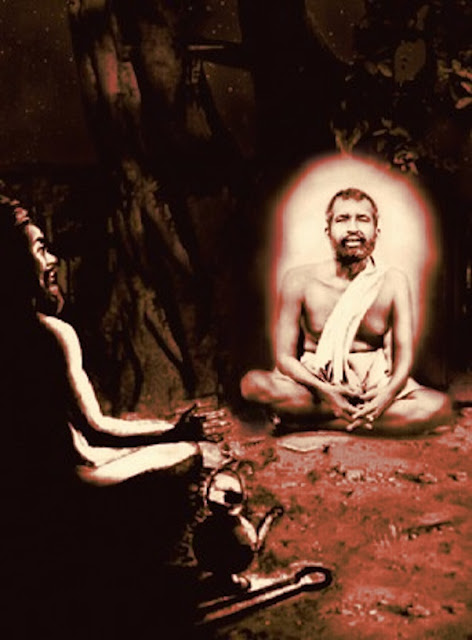History of Spirituality in India is untraceable and it is in the root of Indian culture or whatever that is connected to India and Cremation Ground in India have always been connected with the spirituality and SHIVA especially, He is in the cremation ground all the time.
Why Shiva is several times depicted as sitting in the smashana or cremation ground? Dancing there smeared with Bhasma (Ash) on his body, Meditating there for hours.
All this has a Purpose and the cremation ground definitely has a great connection with spirituality as it can teach anyone the art of dying and Art of living too.
Shamashana or a Cremation Ground have always been a greater factor in the lives of the greatest masters we have ever heard. Be it Gautama Buddha, or Nanak or Today's Sri Ramakrishna Paramhans, OSHO or Sadhguru and of course, SHIVA himself.
Ramakrishna Paramhansa, the 19th-century Indian mystic and saint, is known for exploring various spiritual paths and delving deeply into diverse religious practices to experience the divine. His spiritual journey included intense practices associated with Tantra, which brought him to cremation grounds as a part of his sadhana (spiritual discipline). Tantric practices, especially those associated with the worship of Kali, sometimes involve meditating in cremation grounds, a setting believed to enhance one’s focus on the impermanence of life and the ultimate reality beyond physical existence.
Ramakrishna, under the guidance of his teacher Bhairavi Brahmani, an adept in Tantra, practiced certain Tantric rituals at a cremation ground. These practices involved meditating on the Divine Mother in her fierce form as Kali, embodying the cyclic nature of creation and destruction. By practicing in such intense environments, he aimed to transcend fear, attachment, and all worldly illusions, ultimately experiencing non-dual consciousness.
This practice on cremation grounds played a significant role in Ramakrishna's realization that the same divine presence permeates all aspects of existence—both the beautiful and the terrible, the creation and destruction, the living and the dead. He came to see the Divine Mother, Kali, as both a compassionate mother and a fierce force of nature, and his profound vision led him to a state of universal love and spiritual ecstasy. This realization of oneness was key to his teachings, which encouraged others to see divinity in every aspect of life, beyond all conventional distinctions.
It is said that, Gautam Buddha before making any person his disciple used to ask them to go sit and meditate in the cremation ground for first 3 months.
Gautam Buddha encouraged his disciples to meditate on death and impermanence, sometimes suggesting they reflect on these themes in cremation grounds or charnel grounds. This practice, called maranasati (mindfulness of death), was designed to help them confront the reality of mortality, detachment, and the transient nature of life. By meditating in places where death is openly visible, they could observe the physical changes in the body after death, which helped them understand anicca, the Buddhist concept of impermanence, and realize the futility of attachment to the physical body and material desires.
This approach wasn’t necessarily about dwelling on morbid thoughts but rather about nurturing a profound awareness of the natural cycle of life and death, which is essential to the Buddhist path. It allowed his disciples to experience a deeper acceptance of reality, transcending fear, and finding peace beyond the impermanent world.
Buddha’s emphasis on such practices demonstrates his innovative approach to teaching. He used experiences that could shock individuals into self-reflection and transformation, leading them to a direct understanding of suffering (dukkha), impermanence, and the path to liberation.








No comments:
Post a Comment